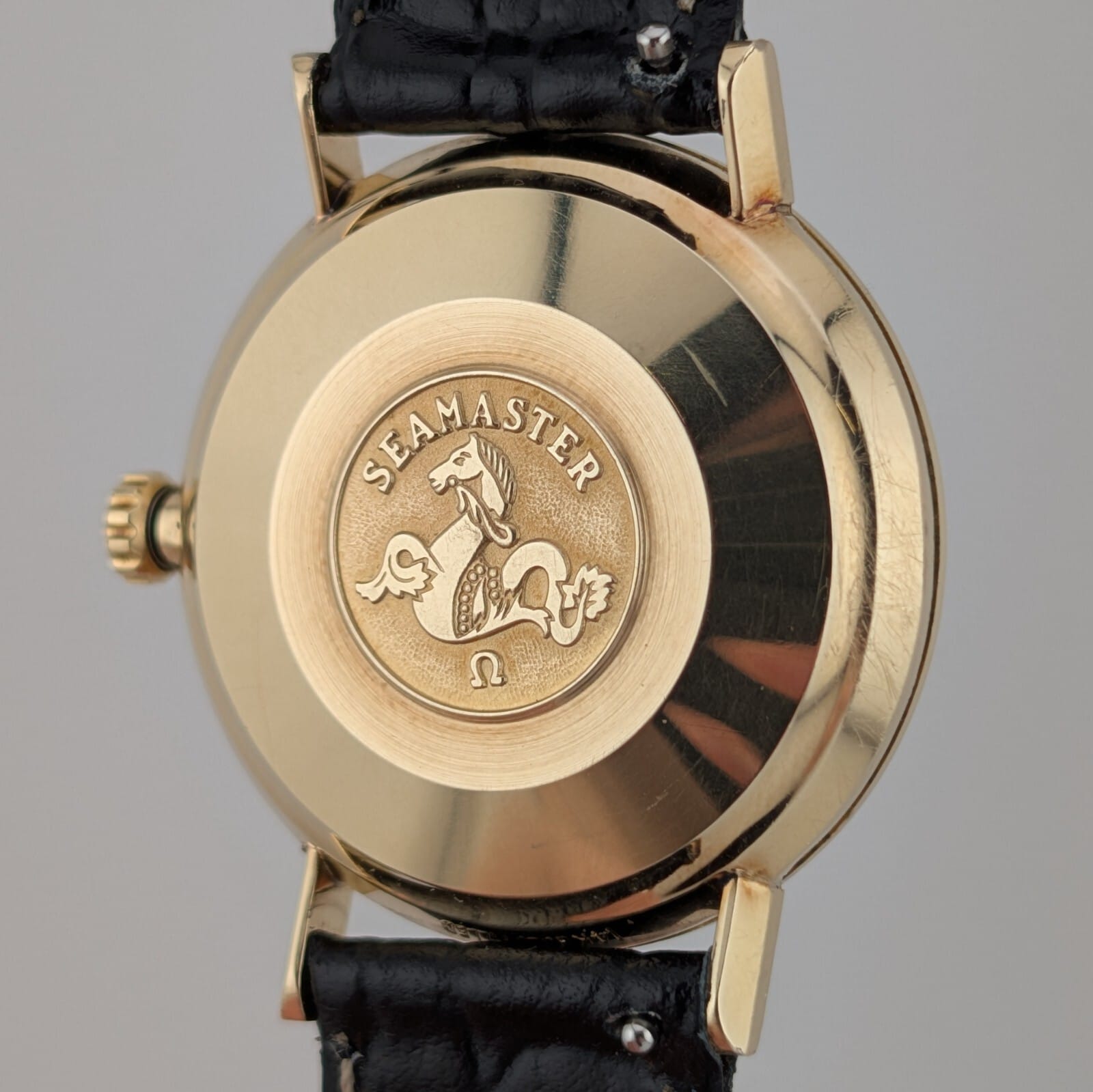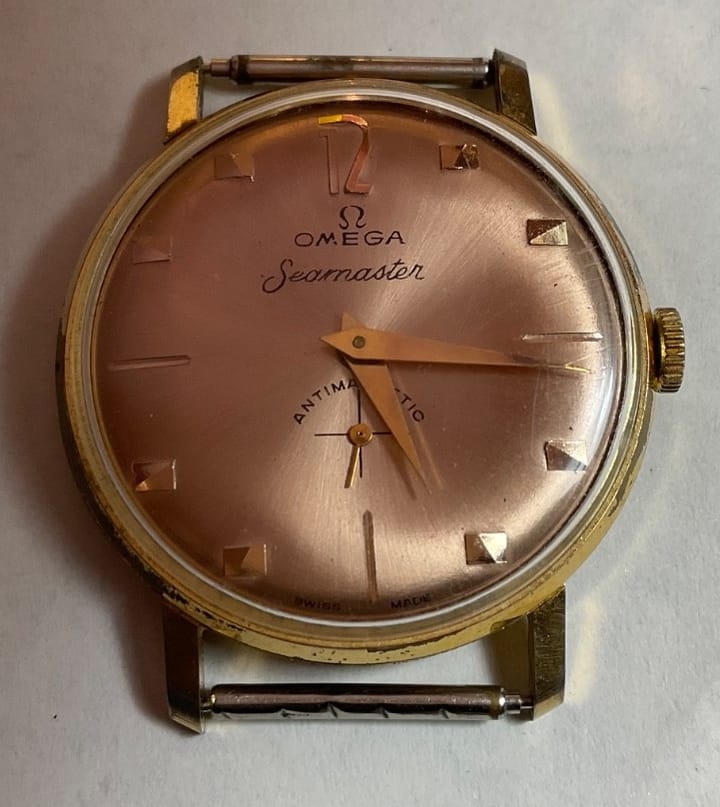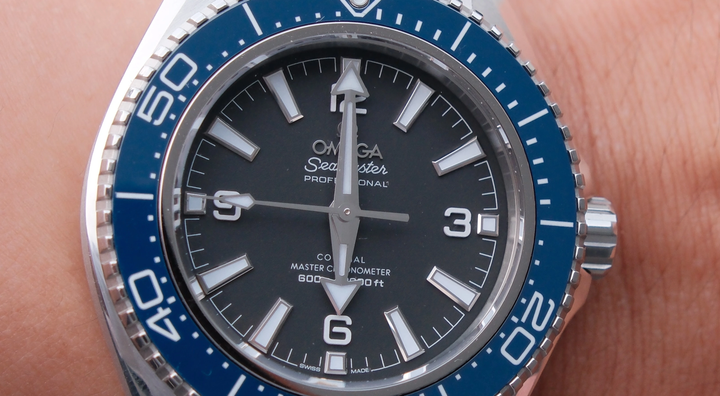The vintage Omega market is full of gold-toned watches — gold-filled, gold-plated, gold-capped, and solid gold — but knowing the difference is key. Learn how each wears, ages, and what to watch out for.
Thickness Compared
The thickness of the different metal types varies significantly. The average vintage Omega watch case of the 1960's, is around 10.8mm from front to back, the diagram below shows the relative thicknesses magnified 50X:
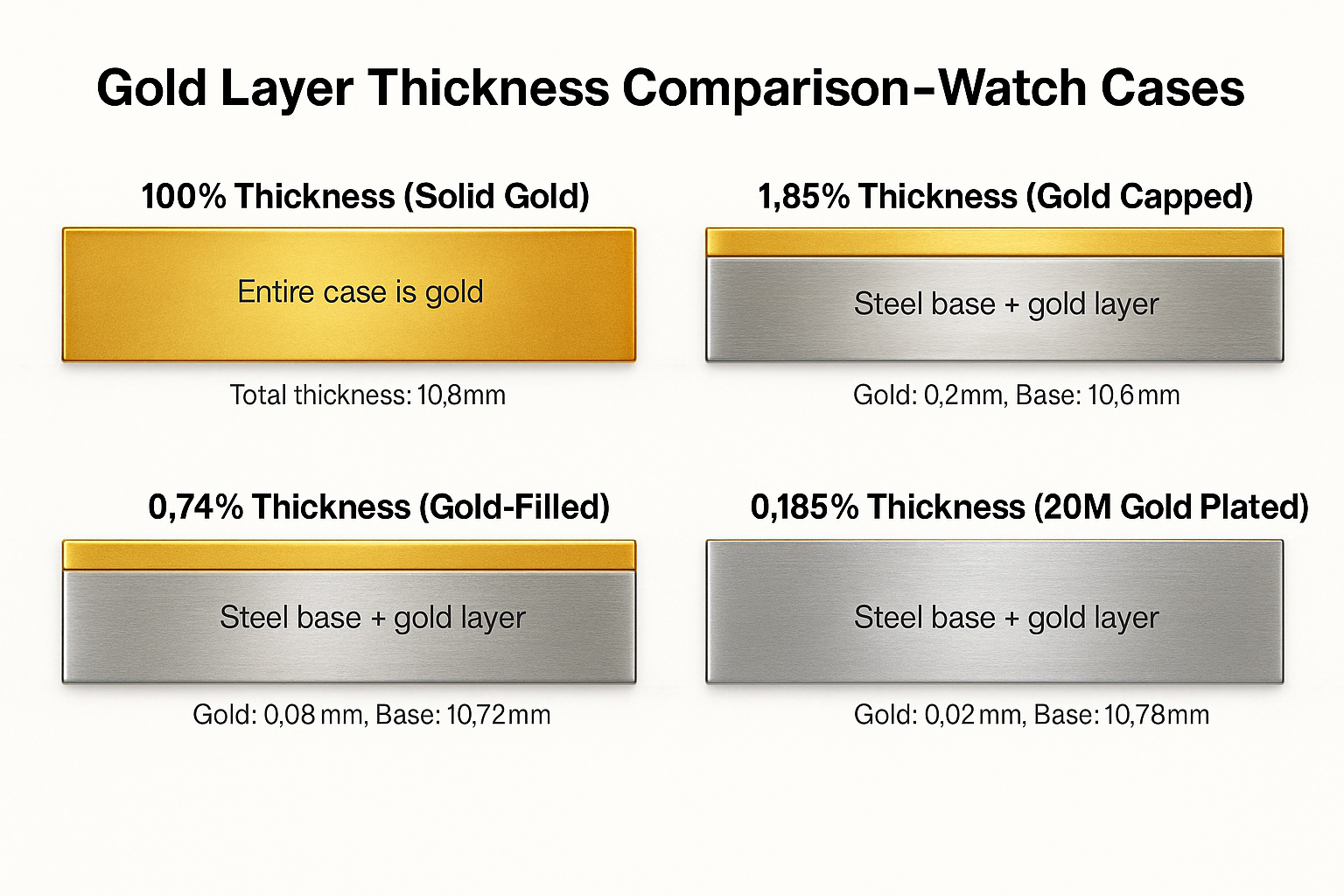
The Difference is quite stark, especially gold-plating at a tenth of the thickness of gold-capping. Each of the metals have very different characteristics, features and wear tendencies, with pros and cons.
Gold Capped
Gold capped is the thickest of gold coatings at around 200 microns or 0.2mm and can take quite a fair bit of polishing without wearing through to base metal.
Gold-cap or gold-shell as it was sometimes called was seen mainly in the 1960's and earlier, and used a layer of gold, bonded under heat and pressure to the base steel case from the front. Due to the way this was bonded, the edges are often less sharp on a gold-capped case than on an equivalent steel case, but at good original example should still be decently sharp.
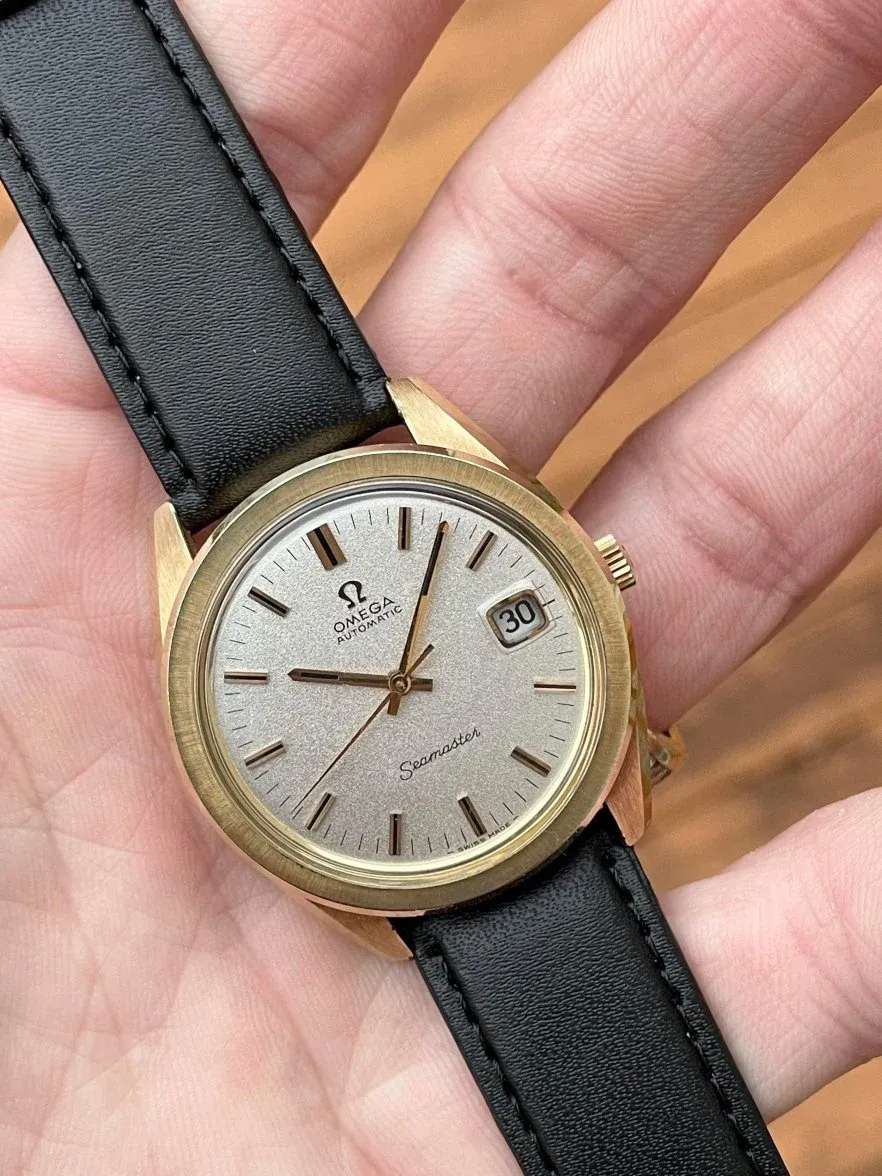
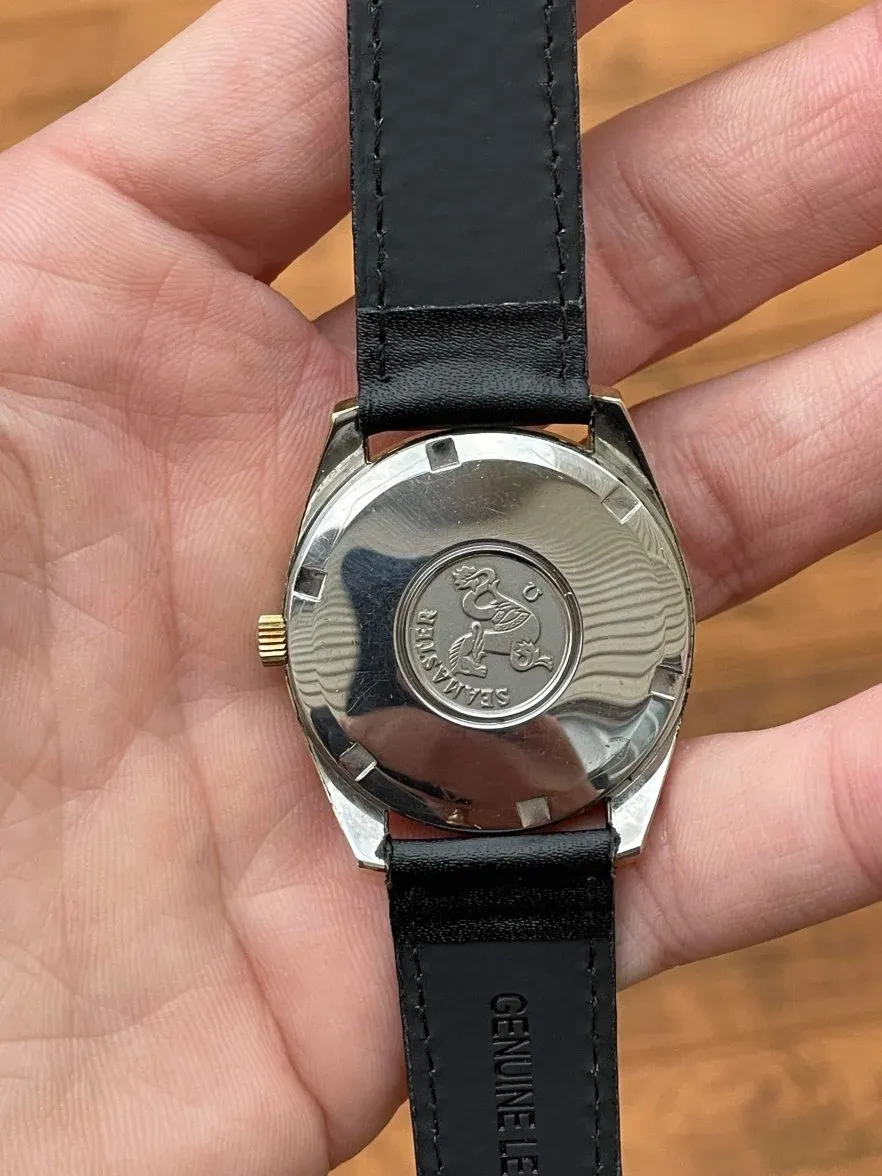
A nice sharp example of a Gold-Capped Seamaster 166.028 Sparkle Dial Cal 565 with telltale steel case-back and exposed rear lugs by @Pmazaran
Gold-capped cases often have solid gold bezels, and typically expose the underlying stainless steel on the back side of the watch. They also typically have a stainless steel case-back to match the steel case-back threads. There are not typically markings to indicate gold-capping but the exposed rear of the lugs is a telltale sign.
Gold-capped being 0.2mm thick can very easily take a polish, even to remove some deeper dings and scratches, but as with solid gold, it can very easily lose edges and sharpness. Due to the decades of regular polishing over the years, the majority of gold-capped watches on the used market are very soft and misshapen, even if wear-through is relatively uncommon.
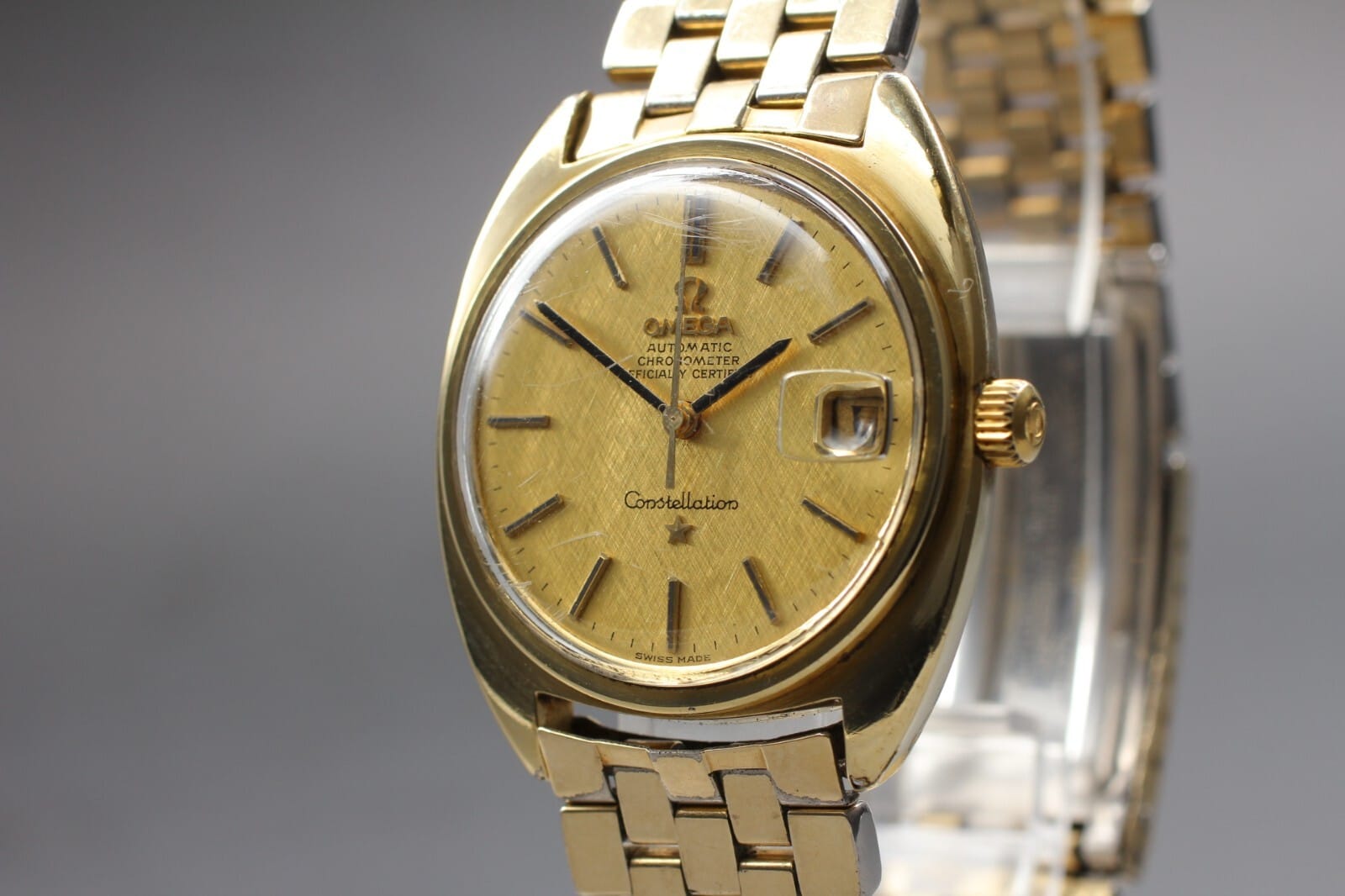
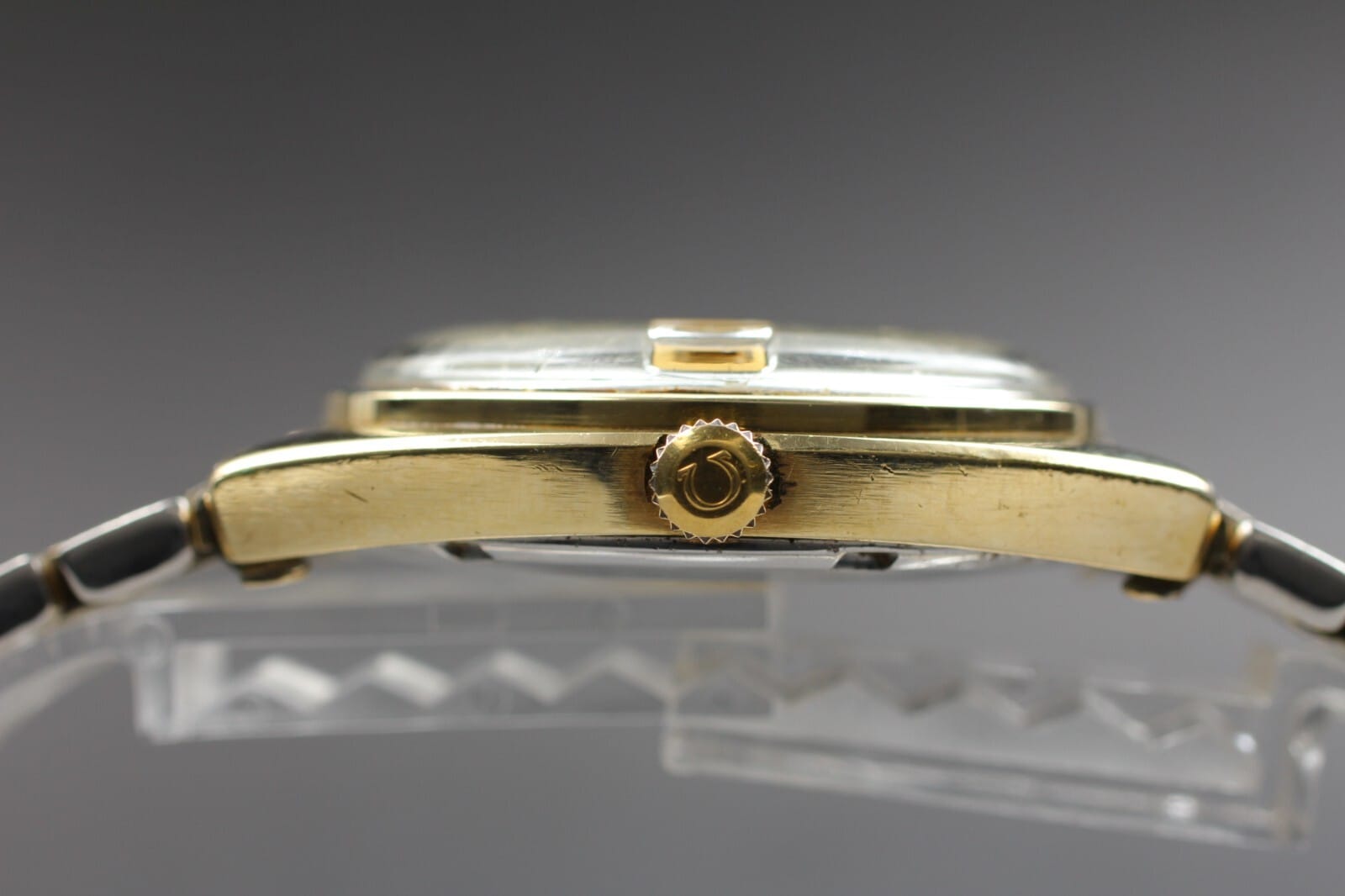
A very severely polished gold-capped C-Case Constellation with visible wear-through and significant loss of shape around the case edges
Polishing of gold-capped cases should only be undertaken by a professional watchmaker with experience doing so, and in good hands edges can be preserved or even restored to some degree.
A nice sharp gold-capped case is absolutely worth owning, is entirely durable enough for daily wear, and will stay sharp for a lifetime if not polished.
Gold Filled
Gold-filled watches have a thinner but still decent layer of around 80 microns or 0.08mm and at least 5% gold content by weight (of the case). These watches have the thinnest coating that can safely be polished, though care must be taken to precent wear through.
Gold-filled, or rolled-gold watches use a thin layer of gold shaped under heat and pressure to the case.
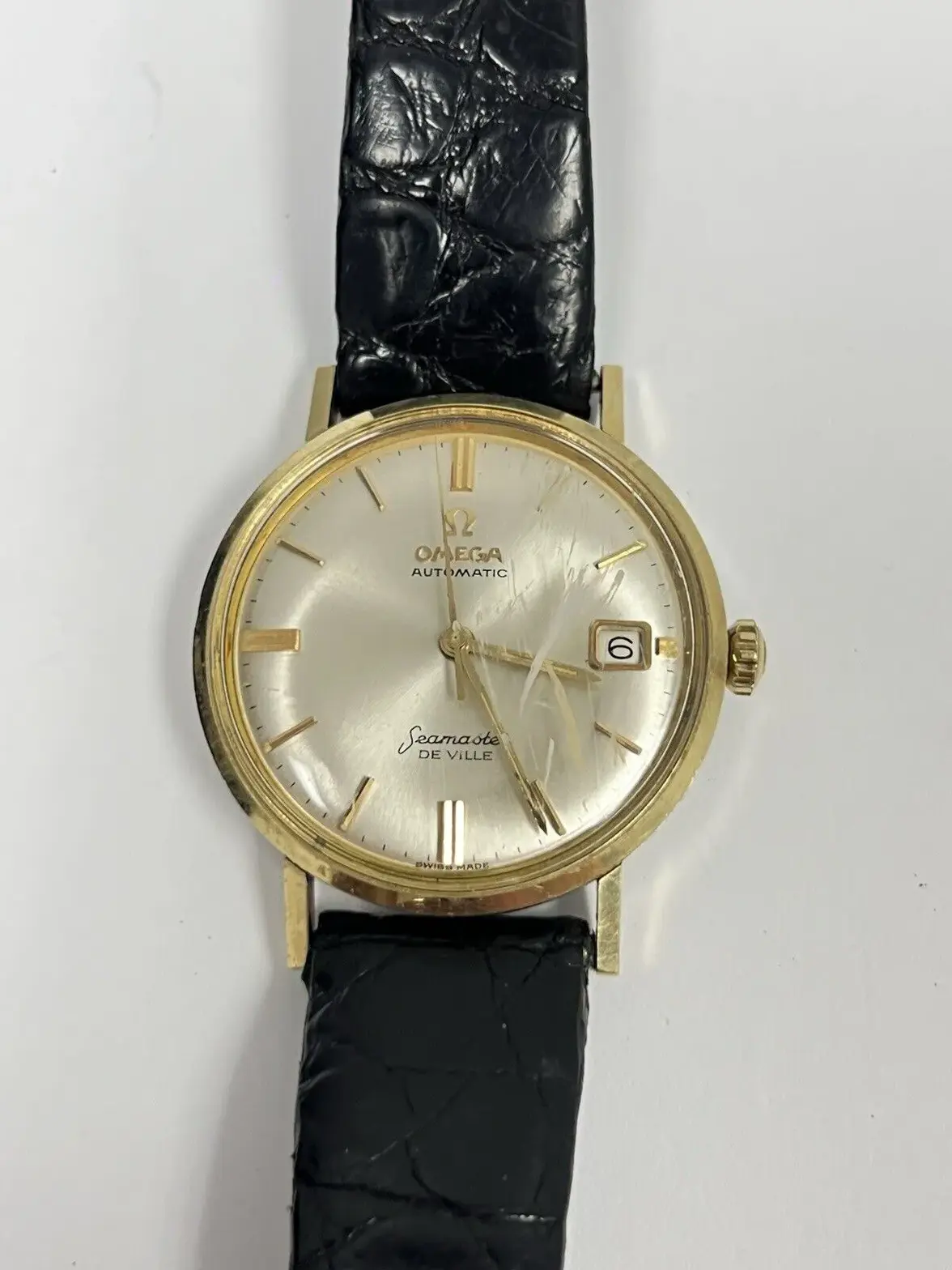
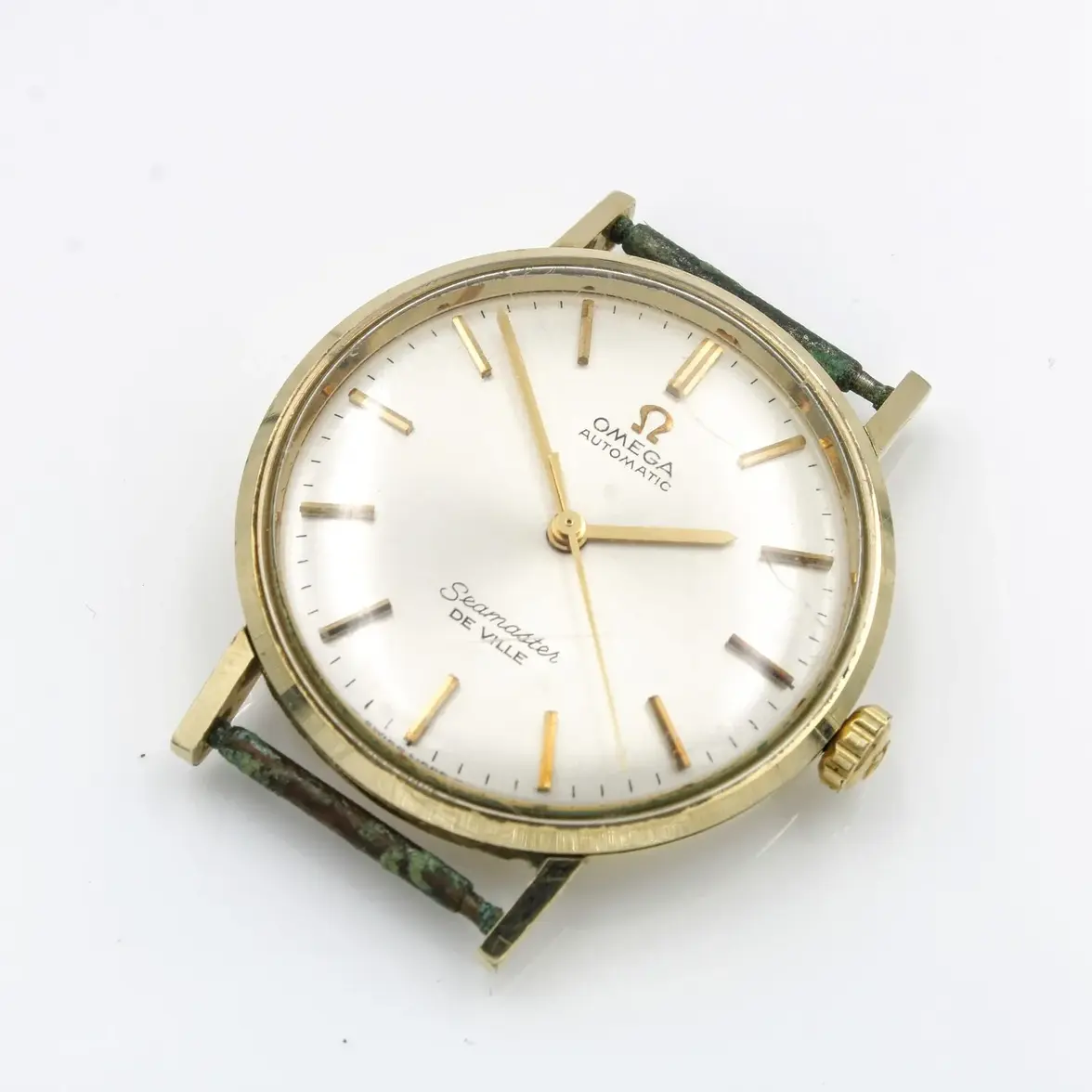
Two Gold-filled Seamaster De Villes with sharp cases but scuffed crystal (left) and a hit of wear to the lug tip (right)
Gold-filled cases are often found to have sharper edges and more complex shapes than gold-capped, especially in vintage Omega models, though this also leads to greater risk of wear through. Bezel edges, lug edges, and the corner tips of lugs are the most common place to find wear-through on gold-filled watches, so photos should be carefully examined before purchase. It is often difficult to tell gold-filled from solid gold, but the absence of gold hallmarks and 14K Gold Filled marked between the lugs or on the case-back is often the best indicator.
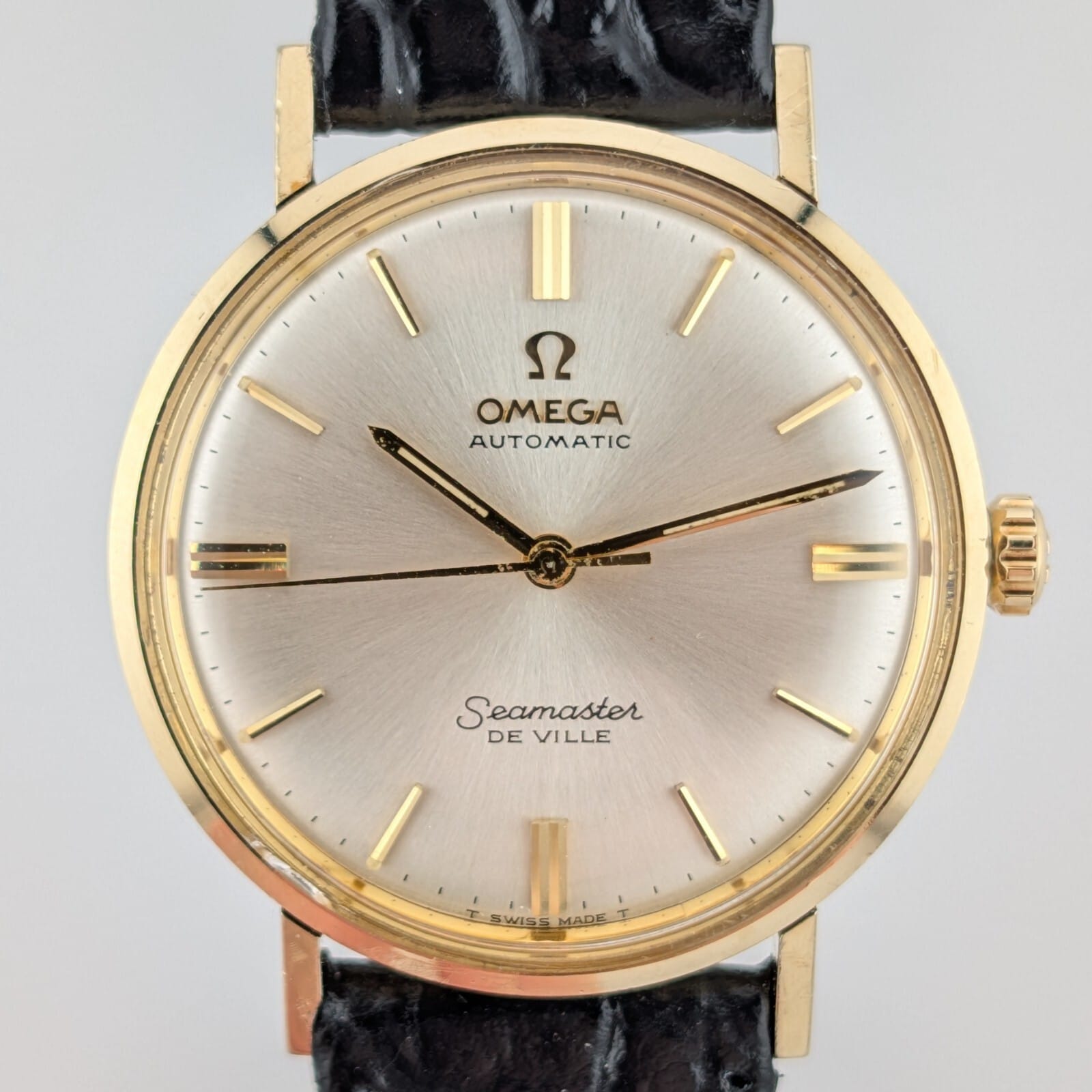
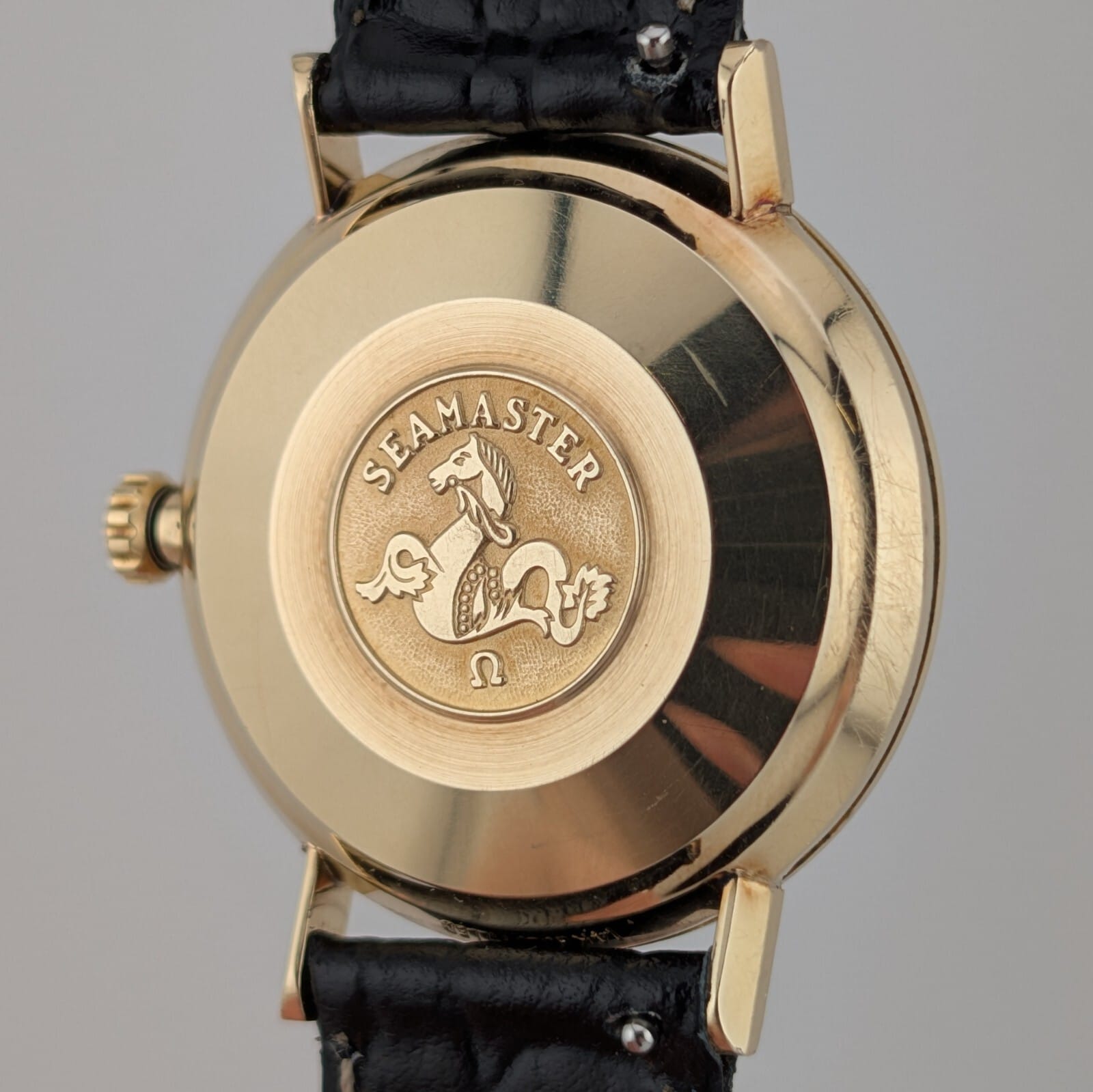
A very nice and clean Seamaster De Ville in gold-filled case, stunning and quite durable
Unlike gold-capped cases, gold-filled coatings typically cover the back as well, including inside the case, the case-back, the threads, and the back of the lugs. The case-backs are another common wear point that needs to be checked, and NATO straps should be strictly avoided on gold-filled cases due to their habit of grinding the coating off the case-back and between the lugs.
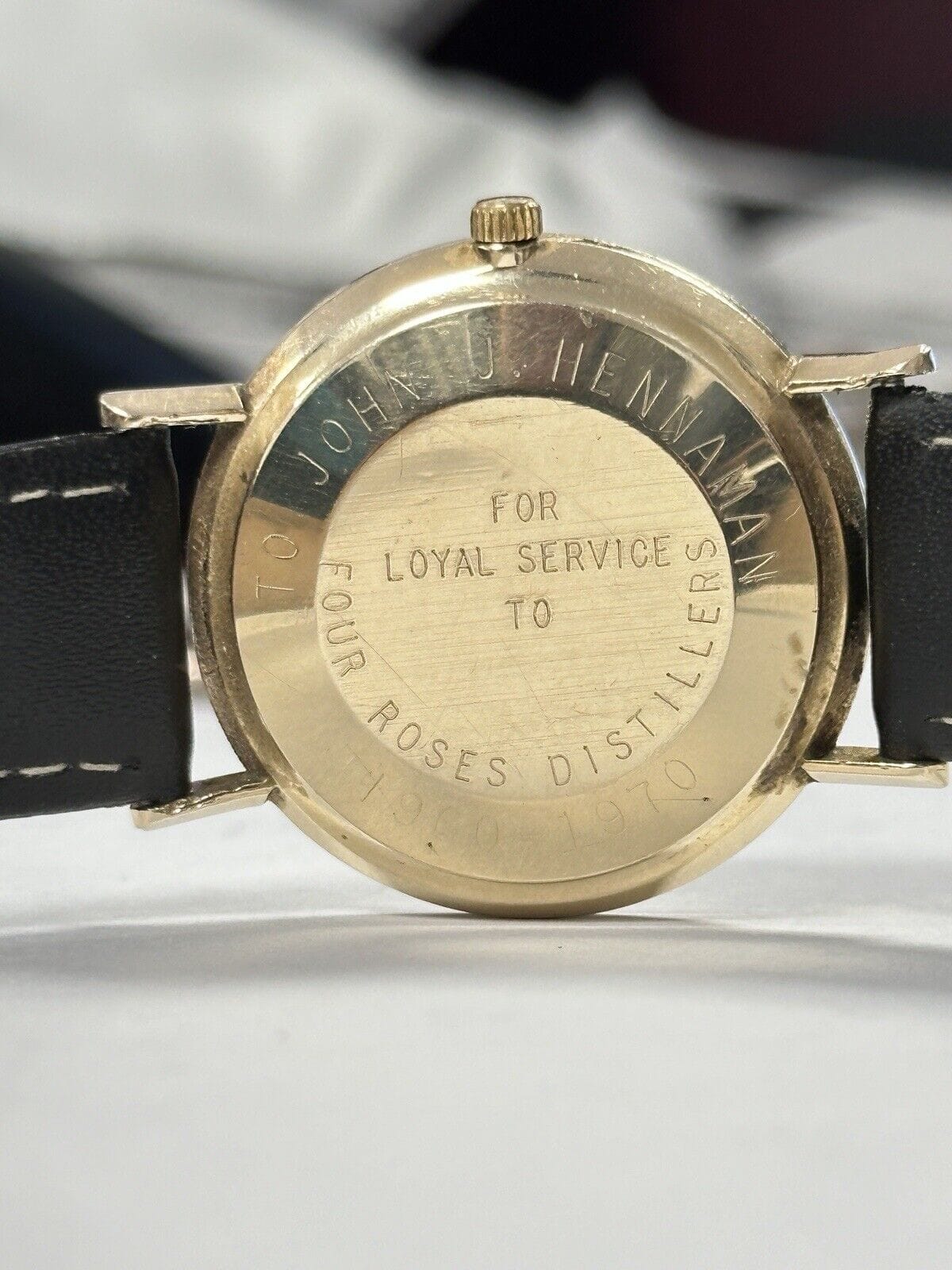
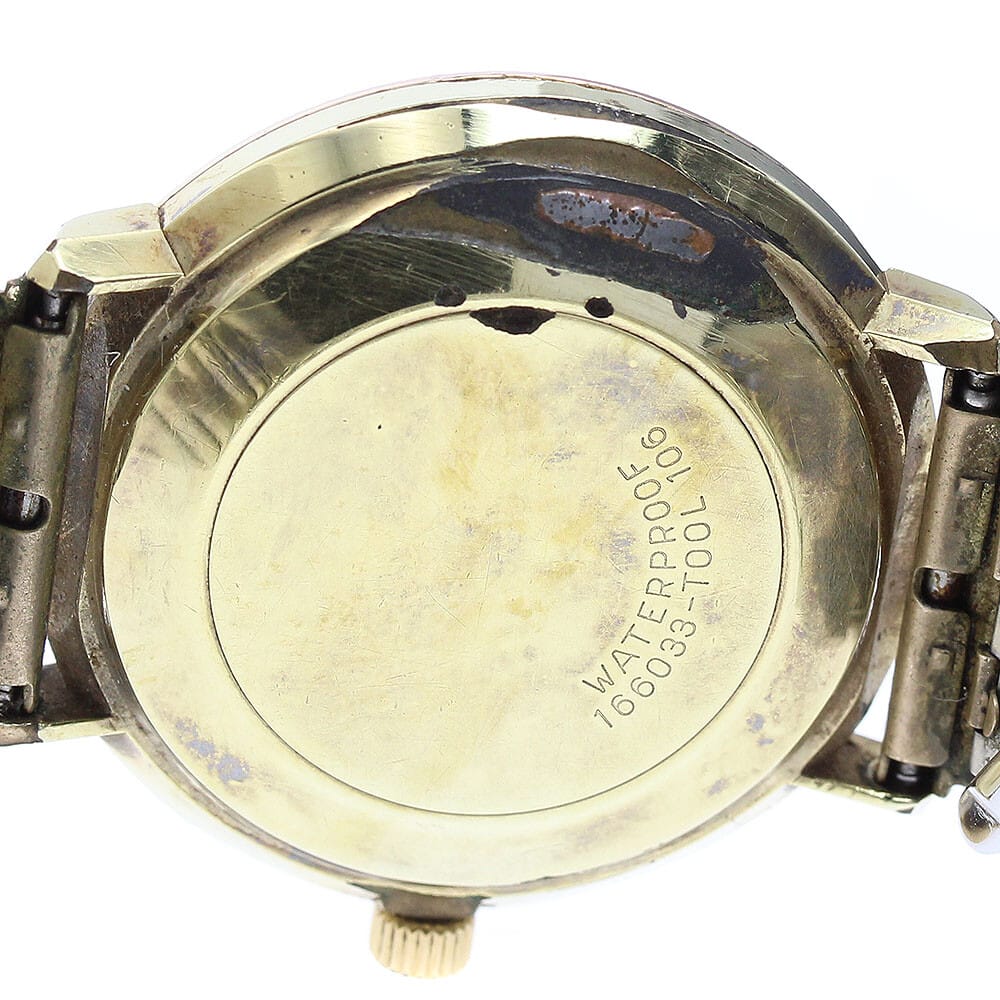
A moderately bad, and horrifically bad example of wear-through on gold-filled Seamaster De Ville models, neither being worth buying
Gold-filled cases rarely lose much of their shape but are more prone to wear-through which should be avoided as it costs far more to repair than it does to replace a worn-through example. Polishing should only be undertaken extremely lightly and carefully by a trained watchmaker and only on cases without evidence of wear-through and sufficient thickness remaining to take it.
Gold Plated
Gold-plating on vintage Omega models became common in the 1970's and 1980's as a cheaper still alternative to gold-filled cases. It is typically 20 microns or 0.02mm thick and cannot typically be polished without risking damage or wear-through with the exception of a very light hand-polish by a professional.
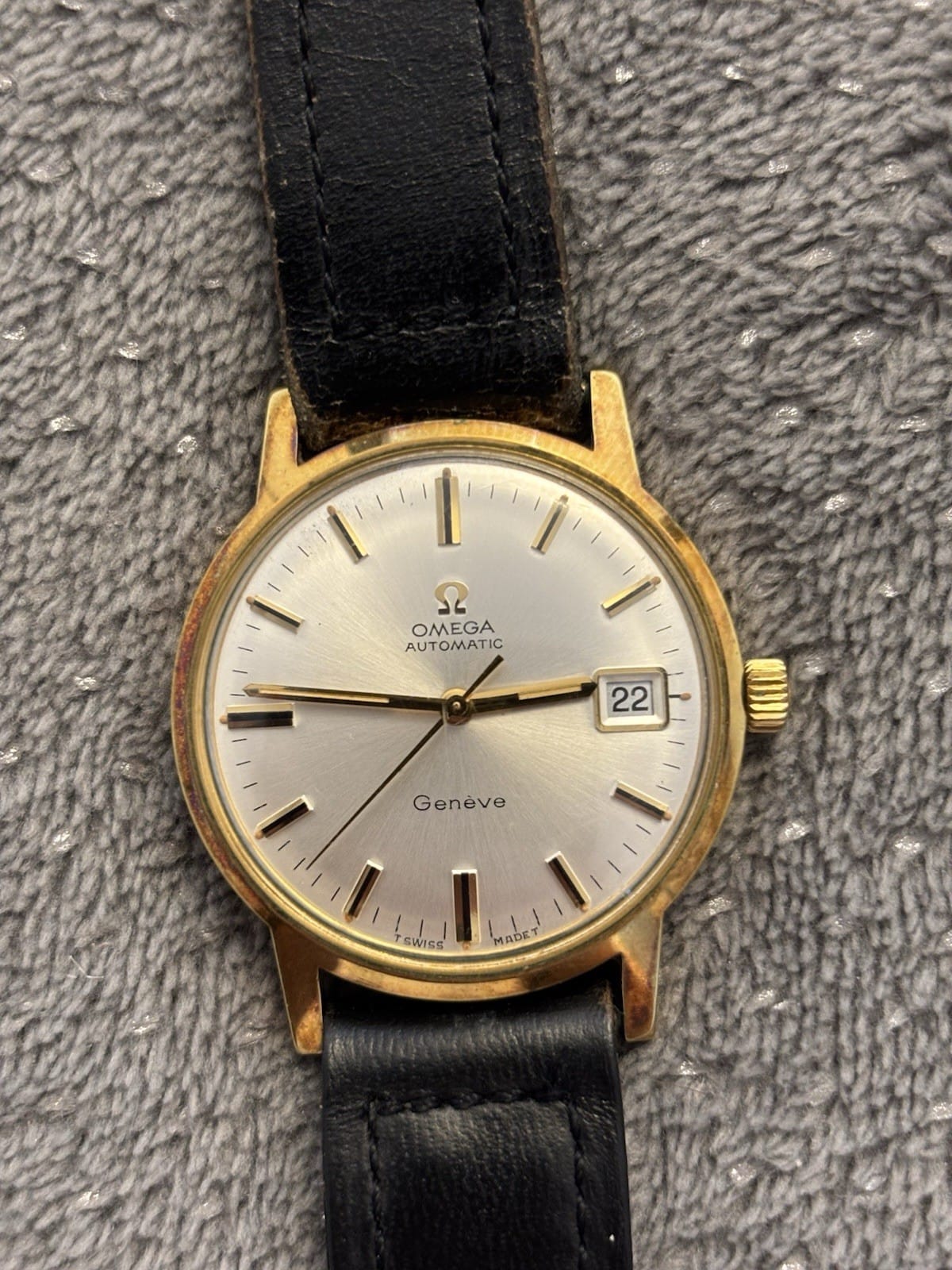
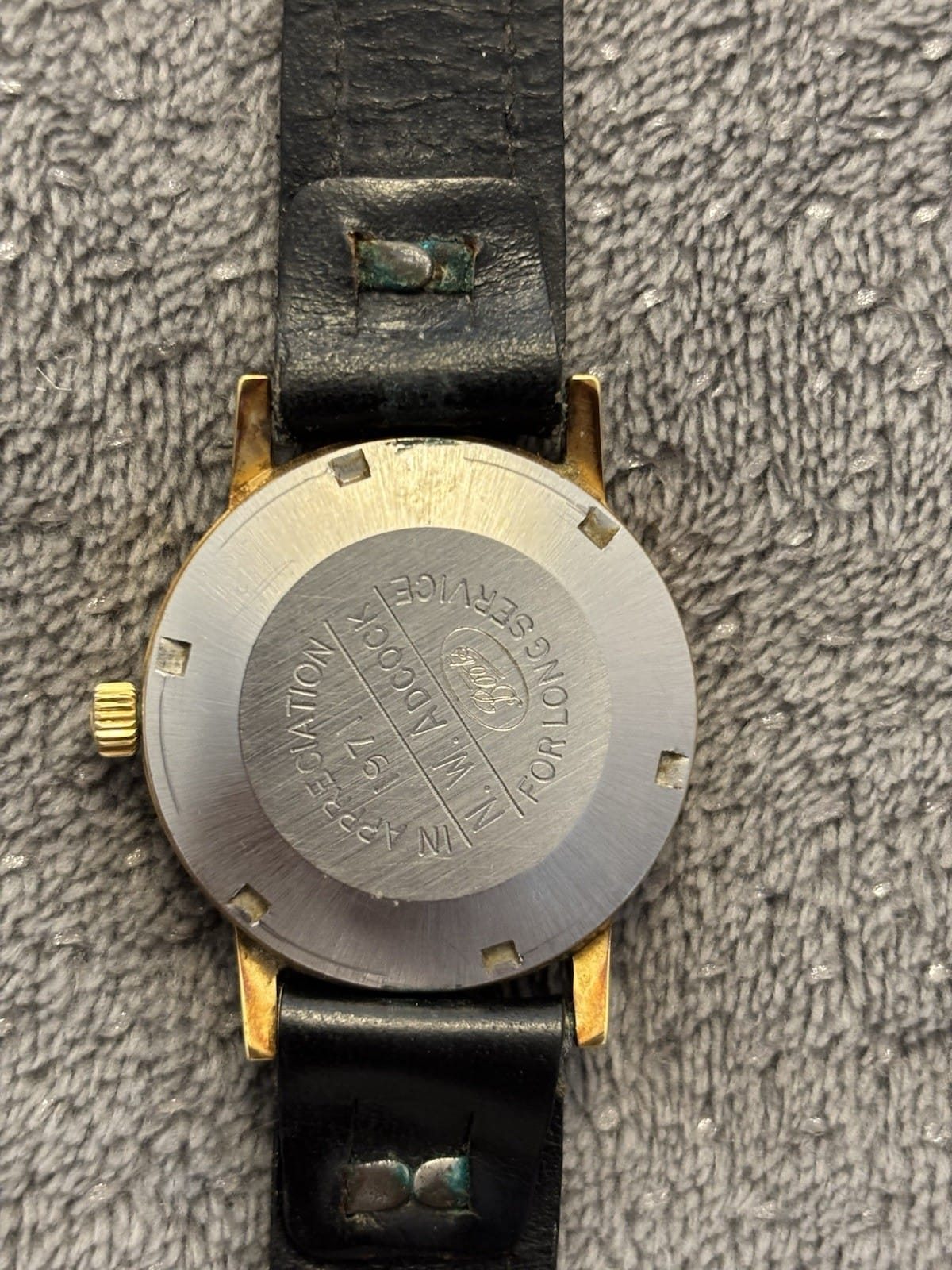
A very nice clean example of a gold-plated Omega Geneve Cal 565
Gold plated cases are typically entirely gold toned, including the back of the lugs, but utilise a steel case-back. They can be either matte, shiny, or patterned / textured on the surface, and the gold is electroplated rather than mechanically bonded. Gold Plated cases have no hallmarks and are often marked 20M for 20 microns or 20M Gold Plated.
Gold-plated cases are highly prone to wear-through and this is exacerbated by the often basic shapes and sharp edges of Omega case designs in that era. Wear-through is most often seen on case edges, tips of lugs, and around the lugs where straps and bracelets are changed.

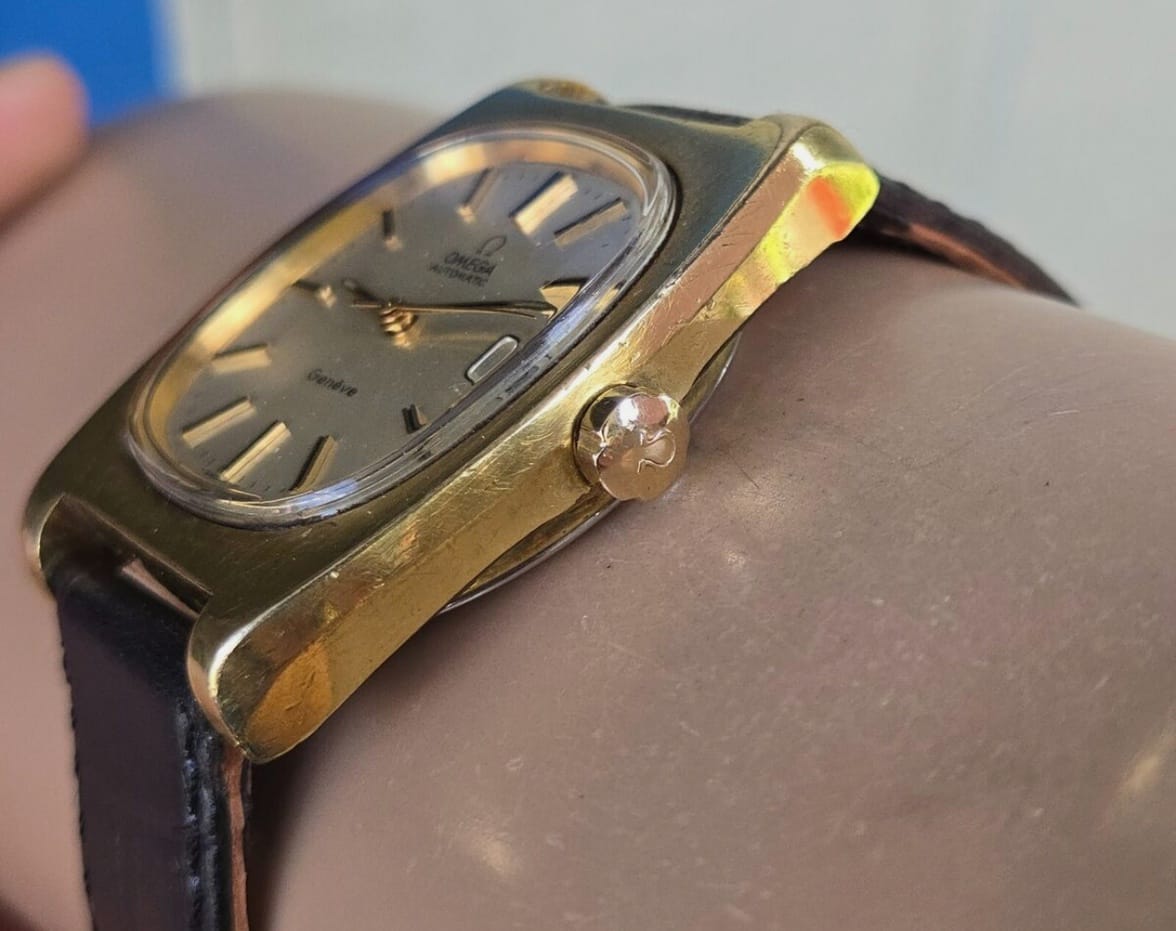
A badly worn-through Geneve in gold-plate, this one is a parts watch at this point
Very light surface polishing can be done on some cases in good shape to restore a shine, but not to remove any scratches or marks and this should again only be done by a professional watchmaker in rare situations, as the risk of damage is quite high given the thin coating.
A perfect gold-plated example with no-wear through can be a decent watch to own, but care must be taken as scrapes against surfaces will cause damage, and even some shirt cuffs can wear away at the edges, as a result most vintage collectors avoid 20 micron gold-plate as much as possible.
Solid Gold
Gold vintage watches are beautiful and special but they come at a very considerable price and are not without their own problems that must be considered.
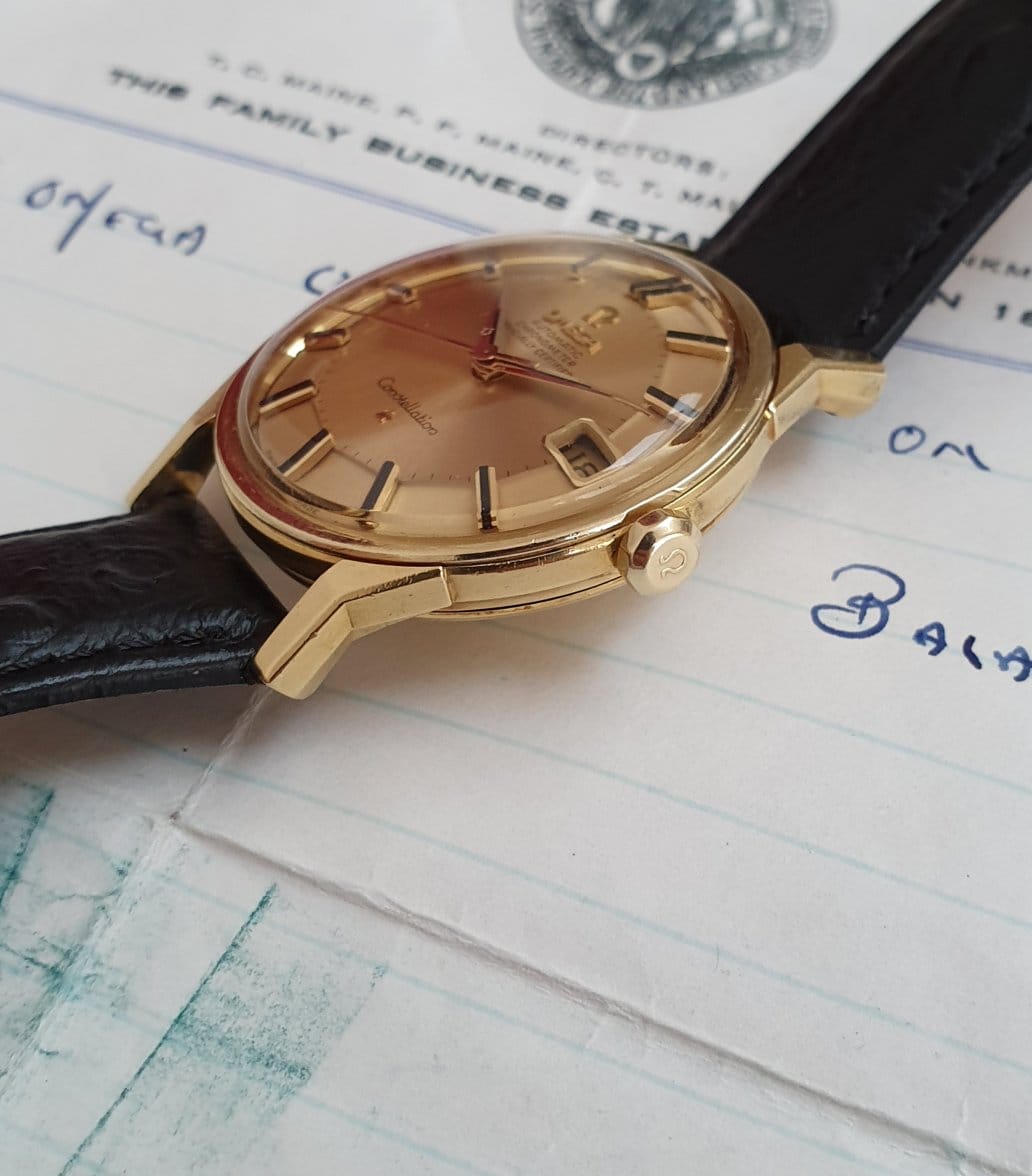
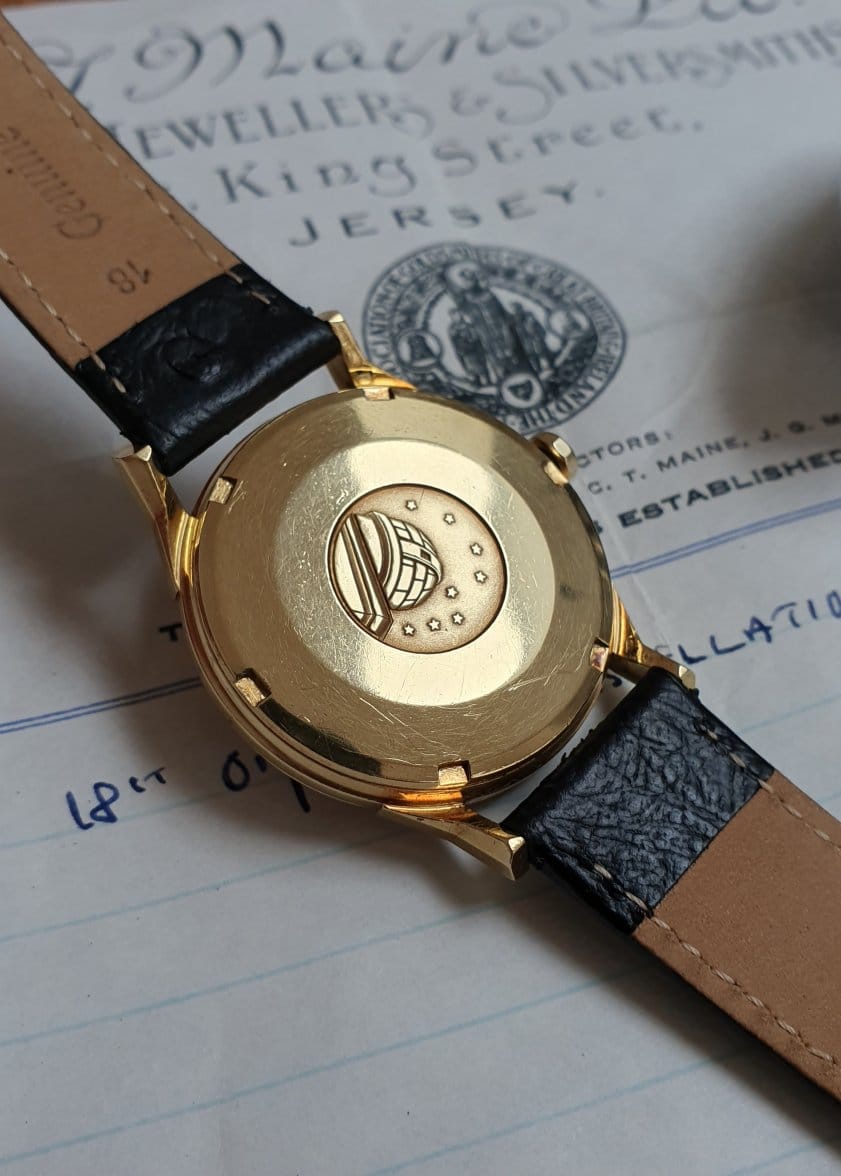

A nice sharp example of a Constellation 168.005 in 18K solid gold with facets and edges in great shape by @smitty190373
Gold is a very soft metal, vastly softer than steel and over the years most vintage Omega's have been polished, often by people of limited skill and ability. Machine polishing of vintage gold Omegas has turned countless beautiful Constellations and Seamasters into amorphous, misshape blobs of metal, as edges and corners are extremely easy lose.
Once these edges are gone, they can be restored but it comes at quite a cost and can only be done by talented professionals, so it is crucial to find a sharp example, and either refrain from polishing, or let it be done only by an expert watchmaker.
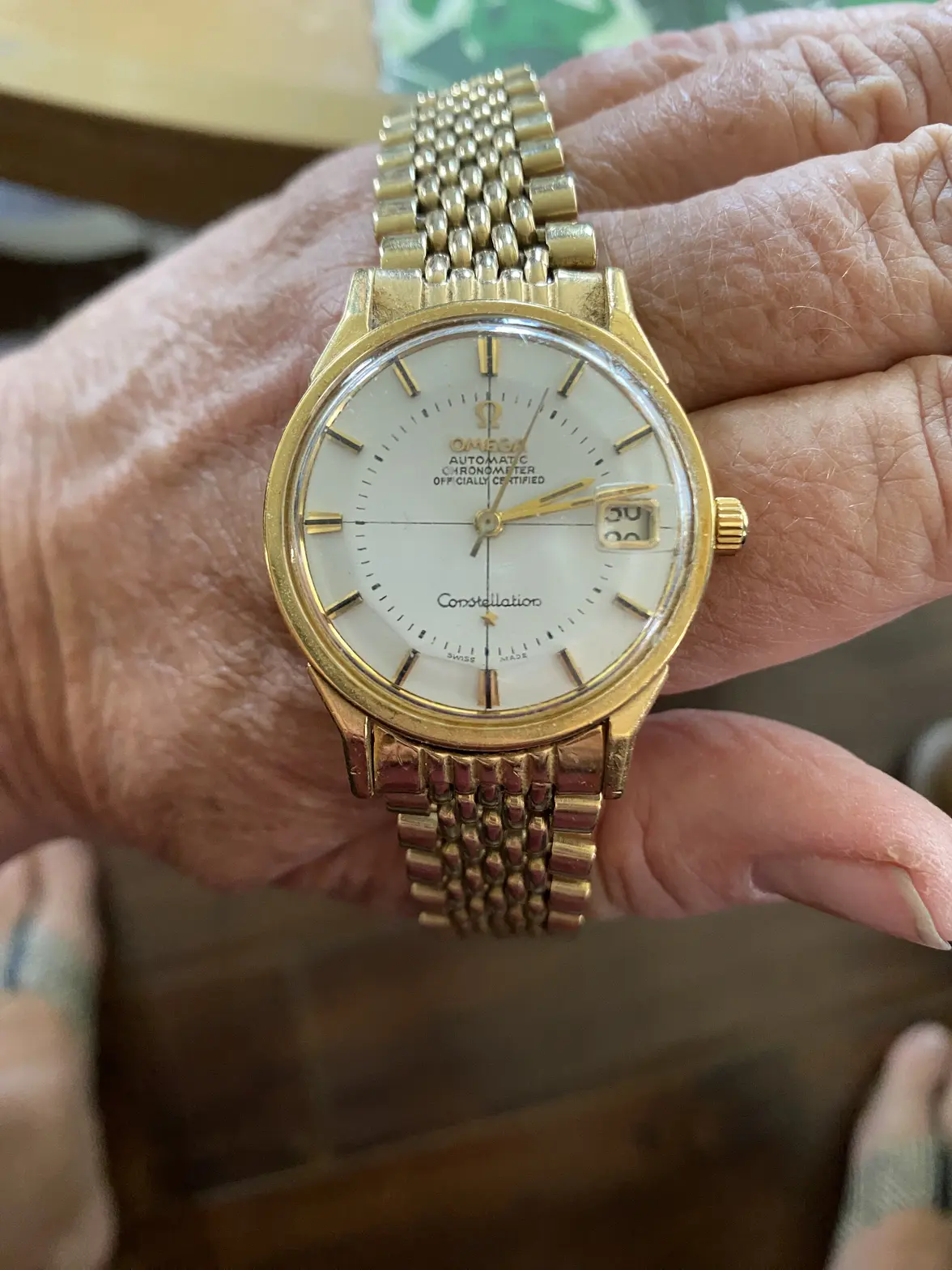
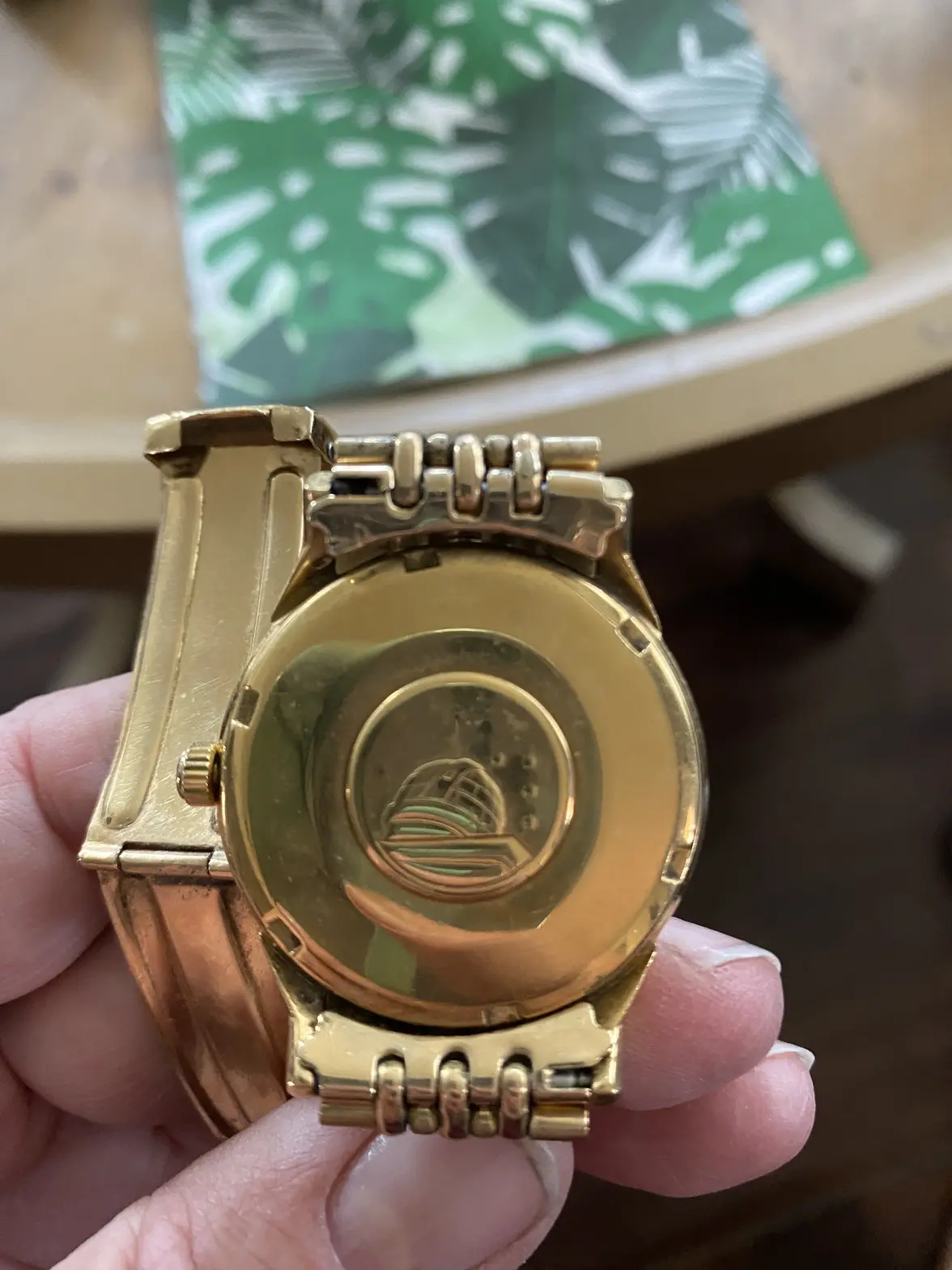
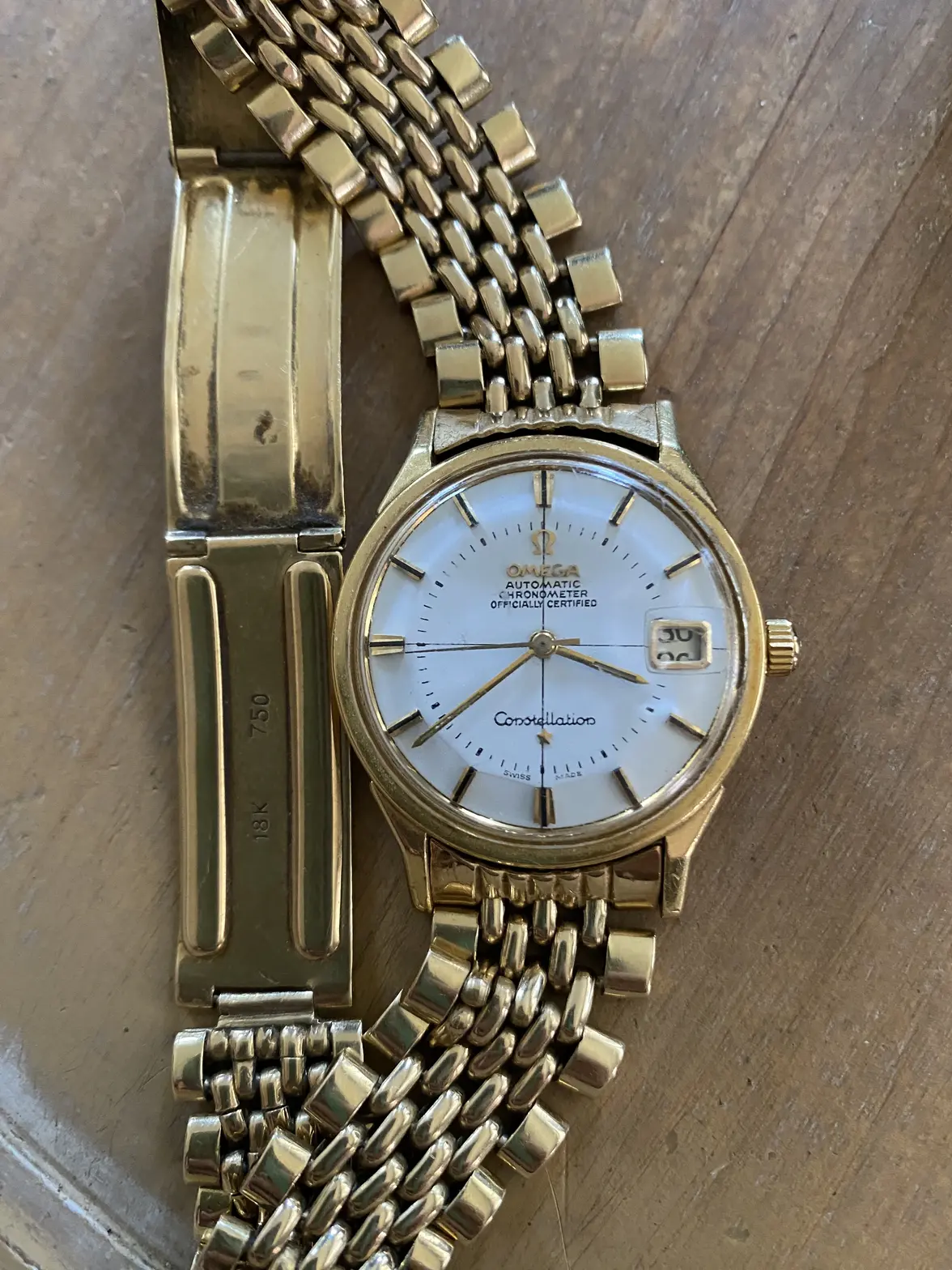
A similar 168.005 in solid gold that has been quite harshly polished and redialed, showing a loss of case edges and lines as well as stars on the case-back medallion
The softness of gold also leads to easily bent and damaged cases. This especially impacts those with thin lugs like Seamaster De Ville models, which bend easily. Case-back threads are also often damaged, cross-threaded and ruined which is expensive to repair, as is damage to the crown tube or lost bezels. Friction-fit snap-back cases can also be bent of damaged during removal or installation and tool marks are a common blight, often leading to excessive polishing to cover it up.
What's Best To Own
Gold-filled, gold-capped, and solid gold are definitely the best to own, with gold-plated being only worth it as a budget option if condition is good enough.
Condition really is key though, it simply costs far too much to repair any gold-coating on a watch to be worth it, so don't buy anything that is not in great condition currently.
Once you acquire a watch in great condition, the second key is don't polish it unless absolutely necessary, and even then, only have a talented watchmaker handle it. Jewellers, salesman, dealers, and owners are not going to ever do the same quality job, and the watch will look worse for it.
If you do take care of your filled, capped or solid gold watch, it will last a lifetime and be a very durable and attractive piece for everyday wear.
